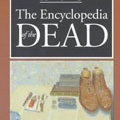A collection of metaphysical short stories set in various times and places, luminously darkened with the themes of fate and death’s impenetrability. With strong political undercurrents and recondite personal insights, Kiš’s reworked facts, Gnostic, Biblical, Koran myths and legends, political situations, rural folktales, depicting the delicate multitude and vicissitude of human life, perhaps with less faux vérité style than A Tomb for Boris Davidovich, yet with the same finely-crafted prose, subtle ironies and detachment that is both powerful and constrained.
The first, heroic, version was upheld and promulgated — orally and then in writing, in their chronicles– by the sans-culottes and Jacobins; the second, according to which the young man hoped to the very end for some magical sleight of hand, was recorded by the official historians of the powerful Hapsburg dynasty to prevent the birth of a legend. History is written by the victors. Legends are woven by the people. Writers fantasize. Only death is certain.
Readers familiar with Kiš’s life and other works (particularly garden, ashes) might feel some semi-biographical elements in The Encyclopedia of the Dead (A Whole Life), but in his insightful post-script, Kiš wrote about how, 6 months after the story was first published,
The person who dreamed the dream and to whom the story is dedicated to” (written for M. — K.) found an article in Yugoslav magazine about top-secret archives that contain names of eighteen billion people, living and dead, carefully entered on the 1,250,000 microfilms compiled to date by the Geneological Society of the Church of the Latter-Day Saints […]
The names in these extraordinary archives come from all over the world; they have been copied painstakingly from the most varied records, and the work goes on. The ultimate goal of this stupendous undertaking is to enter on microfilm nothing less than the whole of mankind — not only the part that is still living but also the part that has passed on to the otherworld.
With the shadows of pogroms, holocaust and fascist regimes looming in the background, Kiš casts doubts on commonly accepted notions (that “books serve only good causes”, that To Die for One’s Country is Glorious). Using a more or less familiar case (The Protocols of Elders of Zion), Kiš conscientiously reconstruct the story, imagining the obscure history, concealing the well-known “conspirator” figures whose sources Kiš discloses at the end of the book in his post-script, all the more creating blurred penumbras of facts and fictions.
Michael Henry Heim did a wonderful job — too bad he didn’t write any introduction.
Much love to L. for getting me this book.


Leave a Reply